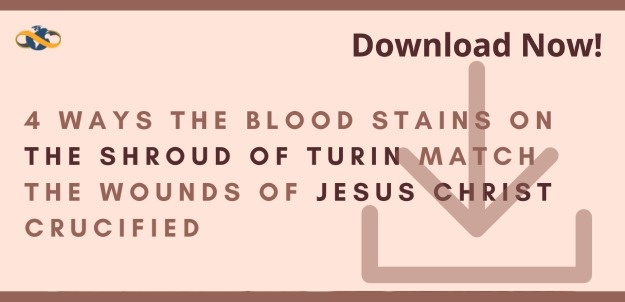Explore the intersection of science, history, and faith to uncover the enduring mystery of the Shroud of Turin.
Few artifacts have captured the world’s imagination and inspired centuries of debate like the Shroud of Turin. This linen cloth, believed by many to be the burial shroud of Jesus of Nazareth, continues to baffle scientists, theologians, and historians alike. Enigmatic and controversial, the shroud bridges the realms of history, religious tradition, and modern forensic science. Through carbon dating, blood analysis, and image evaluation, researchers strive to unlock its secrets. Despite skepticism and conflicting data, the Shroud of Turin remains one of the most studied (and most mysterious) religious relics in human history.
The Historical Journey of the Shroud of Turin
The Shroud of Turin measures 14 feet 3 inches long and 3 feet 7 inches wide. First documented in 1349 in Lirey, France, it was presented by French knight Geoffrey de Charny. Yet, many believe its journey began much earlier: possibly passing through Jerusalem, Edessa (modern-day Şanlıurfa in Turkey), and Constantinople before arriving in Western Europe.
Crucial to this theory is the discovery of pollen grains on the cloth, identified by Swiss criminologist Max Frei. These grains match the flora native to the Mediterranean and Middle Eastern regions, supporting the idea that the shroud traveled through the very lands central to Jesus' life. The alignment of botanical evidence with historical trade and pilgrimage routes lends compelling weight to the shroud's ancient origins.
Scientific Investigations and Controversies
The Shroud of Turin has undergone more scientific analysis than any other relic in history. The 1978 Shroud of Turin Research Project (STURP) conducted a full-spectrum investigation, revealing that the image is not painted or dyed. However, controversy arose with the 1988 radiocarbon dating test, which dated the cloth to between 1260 and 1390 AD, suggesting it was a medieval fabrication.
This result remains widely disputed. Critics argue that the sample used for testing may have originated from a portion of the cloth that was repaired in the Middle Ages. Other factors (such as bacterial contamination and the fire in Chambery in 1532) could have altered the carbon content. Alternative scientific approaches, including vanillin degradation tests, infrared spectroscopy, and mechanical textile analysis, suggest the shroud’s origin could lie much closer to the first century.
Analyzing the Blood Stains: What They Reveal
Perhaps the most compelling evidence for the shroud’s authenticity is found in its bloodstains. Forensic studies confirm the presence of real human blood, specifically, male blood of the AB type. These stains match the flow patterns of a crucified man, consistent with the Gospel accounts of Jesus’ suffering: scourging, crowning with thorns, crucifixion, and a wound in the side.
Importantly, scientific analysis reveals that the blood was deposited on the cloth before the mysterious image appeared. This sequence strongly argues against any medieval forgery, as it demonstrates a natural progression of events involving a real body rather than artistic application.
Unraveling the Image Formation on the Shroud
One of the greatest mysteries of the Shroud of Turin is how the image was formed. It behaves like a photographic negative, displaying a high-resolution, anatomically correct image of a crucified man. There are no pigments, dyes, or brushstrokes present. The image is confined to the topmost fibers of the linen and does not penetrate the cloth.
Recent theories propose that a burst of high-energy ultraviolet radiation created the image—a type of light not reproducible by medieval technology. Researchers such as John Jackson and Paolo Di Lazzaro have conducted experiments that support this hypothesis. The nature of this radiation, and its possible source, remains unknown, deepening the intrigue surrounding the shroud.
Dating the Shroud: Methods and Challenges
Dating the Shroud of Turin has been one of the hottestly contested topics in modern relic science. While the 1988 carbon dating results placed the cloth in the medieval era, newer methods have challenged that conclusion.
Raymond Rogers’ vanillin test suggested an age of 1,300 to 3,000 years, aligning with the time of Jesus. Giulio Fanti’s spectroscopic and tensile tests yielded similar results. Together, these findings reopen the possibility that the shroud genuinely dates to the 1st century, casting doubt on the widely publicized 1988 results.
Supporting evidence also comes from non-dating methods, such as the analysis of ancient coins and related relics, which point to a timeline consistent with the early Christian period.
Connections to Historical Artifacts: Coins and the Sudarium
The Shroud of Turin does not exist in isolation. It is linked to other sacred relics that reinforce its historical and geographical narrative. One such artifact is the Sudarium of Oviedo, a bloodstained face cloth housed in the Cathedral of Oviedo, Spain. The Sudarium has been historically documented since 616 AD and shares remarkable bloodstain congruence with the Shroud, suggesting both may have covered the same individual.
In addition, polarized image analysis has revealed the faint imprint of Roman coins (specifically lepta minted by Pontius Pilate around 29 AD) over the eyes of the man in the shroud. This Jewish burial practice, combined with the coin identification, offers strong circumstantial evidence of the relic’s antiquity and authenticity.
Conclusion: A Mystery that Endures
Despite decades of testing, debate, and renewed investigation, the Shroud of Turin continues to resist simple explanation. Whether viewed as a divine sign, a historical artifact, or an unsolved scientific puzzle, the shroud invites continual reflection. Its intersection of faith and forensics has made it not only a focal point for Christian devotion but also a subject of enduring academic interest.
As science evolves and technology advances, future research may bring us closer to understanding this sacred cloth. Until then, the Shroud of Turin remains an awe-inspiring enigma—challenging, inspiring, and deeply rooted in the human search for truth.
Below you can read Fr. Spitzer's entire article, "Science and the Shroud of Turin."
*Originally published July 16, 2016.



